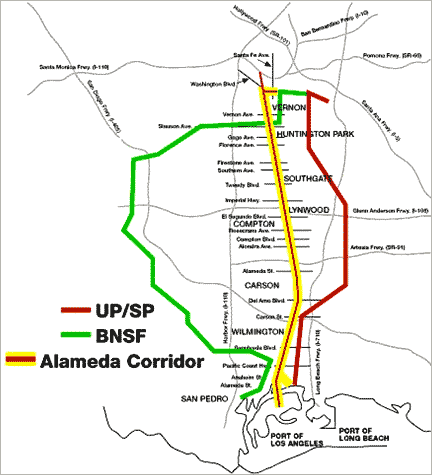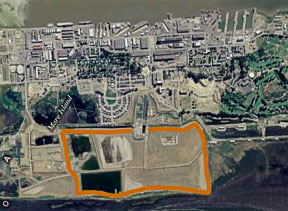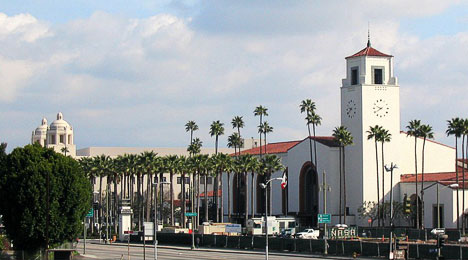Project: Alameda Corridor NEPA/CEQA Support

The project consolidated several freight rail lines through Los Angeles into a below grade corridor with grade crossing improvements that increased traffic flow efficiency. Pika Environmental staff performed specialty studies of the feasibility of consolidating rail traffic originating in the Ports of Los Angeles and Long Beach into one corridor through the City. As air quality expert for the design team, Pika Environmental staff evaluated below-grade rail corridor configurations for both the NEPA and CEQA process and characterized the emissions benefits of improved infrastructure in meeting NAAQS and CAAQS.
The analysis involved emissions characterization of construction and operational emissions, air dispersion modeling using MOBILE5 and CALINE, CO conformity analysis, and risk assessment techniques for characterizing the effects of non-criteria pollutants within tunnels. The results were used to evaluate the preliminary design to ensure that aspects of the projects were protective of both worker health and safety and public health.
Pika Environmental staff allowed ACTA to take full advantage of the air quality benefits associated with more efficient goods movement.
Project: NEPA/CEQA Process for Mare Island Dredge Pond Commercialization

As part of the NEPA/CEQA process for the commercialization of Navy dredge ponds at the former Mare Island Naval Shipyard, Pika Environmental Staff analyzed the air quality impacts for the project. Emission scenarios were developed for transfer of dredged materials from barges to trucks and into pipelines, transport of dredged material along access routes, and placement of those materials into ponds. Construction emissions generated when raising the levees, and regular maintenance of the surface was also estimated. A conformity determination under NEPA was evaluated and found to be consistent with SIP planning estimates. Activity management (dust control) techniques and associated mitigation monitoring programs were developed to ensure project emissions were maintained below significant requirements. The toxic effects of dried dredge material was also analyzed to ensure dust exposure to adjacent neighborhoods did not pose a significant health risk.
Project: Air Quality Support – LA MTA Union Station Run-through

Pika Environmental staff evaluated both CEQA and NEPA air quality impacts associated with a LA MTA rail improvement project associated with Union Station. This project was initiated so that Amtrak and Metrolink passenger and light rail commuter trains could be accommodated in current and future years. Pika Environmental staff quantified the criteria emissions associated with the project during construction and operation and performed both a general and transportation conformity analysis of the project. When it was unclear whether the project was "conforming" under the TIP, a key staff member met with local and state transportation planners to facilitate the transportation conformity demonstration process.
Project: Air Quality Support – 101 Deck Bridge
The Caltrans 101 deck bridge project will create a joint walkway that will connect Olvera Street Promenade with the Los Angeles Music Center. Pika Environmental staff evaluated the construction effort associated with constructing this walkway over the 101 freeway. Construction drawings and techniques were evaluated and equipment inventories developed. Construction emissions scenarios were developed for each phase of the effort and a worst case period selected for evaluation in terms of CEQA significance criteria. The effort was then documented in a formal section of the EIR for the project.
Project: Southern California Regional Rail Authority, Santa Ana Second Main Track,
Air Quality Analysis, Santa Ana, California.

Pika Environmental staff was responsible for preparing air quality section of the Environmental Impact Report. Our staff analyzed the proposed project with respect to its potential impacts to the residents of the City of Santa Ana. We developed both the construction and operation emissions associated with an additional set of railroad tracks to the rail line from Los Angeles to Orange County. Our staff also projected the air quality benefits associated with eliminating train delay within city boundaries, as well as the benefits of improved vehicular traffic flow associated with moving the rail corridor below grade.

